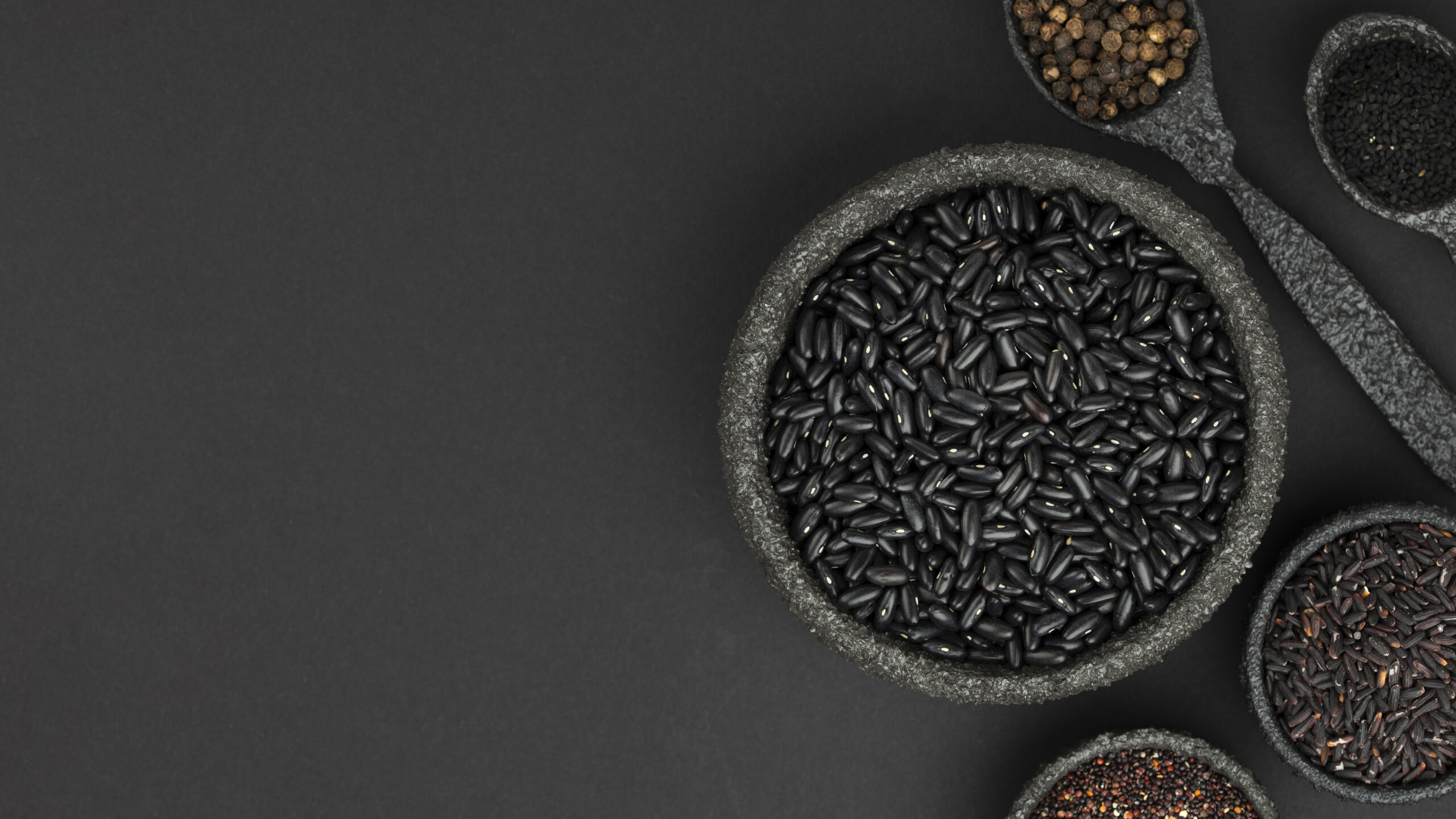Black rice, also known as forbidden rice or emperor’s rice, has been cultivated for thousands of years.
Originally reserved for Chinese royalty, this nutrient-rich grain is now gaining popularity worldwide due to its numerous health benefits.
This article explores the incredible benefits and why you should consider adding it to your diet.
What is Black Rice?
It is a type of heirloom rice that gets its dark purple-black color from a high concentration of anthocyanins, powerful antioxidants also found in blueberries and blackberries.
Unlike white rice, it retains its bran layer, making it a whole grain packed with nutrients and fiber.
Nutritional Profile in Black Rice
You Know it is a nutritional powerhouse, offering an impressive array of vitamins, minerals, and antioxidants. A 100-gram serving of black rice provides:
- Calories: 335
- Protein: 8.5 grams
- Fat: 2.3 grams
- Carbohydrates: 72 grams
- Fiber: 4.9 grams
- Iron: 3.5 milligrams
- Vitamin E: 1.2 milligrams
It is also rich in amino acids, essential fatty acids, flavonoids, and phenolic compounds, contributing to its health-promoting properties.
Health Benefits
1. Rich in Antioxidants
The high levels of anthocyanins in black rice are potent antioxidants that help neutralize harmful free radicals in the body.
Antioxidants are crucial in reducing oxidative stress, which can lead to chronic diseases such as heart disease, cancer, and diabetes.
2. Supports Heart Health
Regular consumption of black rice can significantly benefit heart health.
The anthocyanins in black rice help reduce inflammation and improve cholesterol levels by decreasing LDL (bad cholesterol) and increasing HDL (good cholesterol).
Additionally, the high fiber content helps manage blood pressure and reduces the risk of cardiovascular disease.
3. Aids in Weight Management
It is an excellent addition to a weight loss diet. It is low in calories and high in dietary fiber, which promotes a feeling of fullness and helps control appetite.
The protein content also aids in muscle repair and growth, making it an ideal food for those looking to manage their weight and improve their overall health.
4. Improves Digestive Health
The dietary fiber in supports healthy digestion by promoting regular bowel movements and preventing constipation. Fiber also serves as a prebiotic, fostering the growth of beneficial gut bacteria, which are essential for a healthy digestive system and overall well-being.
5. Regulates Blood Sugar Levels
Black rice has a low glycemic index, meaning it releases sugar slowly into the bloodstream.
This property makes it an excellent food choice for people with diabetes or those at risk of developing the condition. The fiber content also helps stabilize blood sugar levels by slowing down the absorption of glucose.
6. Boosts Brain Health
The antioxidants particularly anthocyanins, have been shown to protect brain cells from oxidative stress and inflammation. Regular consumption can enhance cognitive function, improve memory, and reduce the risk of neurodegenerative diseases like Alzheimer’s and Parkinson’s.
7. Supports Eye Health
It contains significant amounts of vitamin E and carotenoids, which are beneficial for eye health. These nutrients help protect the eyes from damage caused by free radicals and reduce the risk of age-related macular degeneration and cataracts.
8. Strengthens Immune System
The rich antioxidant profile and essential nutrients that help strengthen the immune system. A robust immune system is crucial for defending the body against infections and diseases. The presence of zinc, iron, and vitamins in black rice also plays a vital role in maintaining a healthy immune response.
How to Incorporate Black Rice into Your Diet
Adding rice to your diet is simple and can enhance the nutritional value of your meals. Here are some tips on how to enjoy this superfood:
- As a Side Dish: Cook black rice as a side dish to accompany your favorite proteins and vegetables.
- In Salads: Add cooked black rice to salads for extra texture and nutrition.
- In Soups and Stews: Use black rice in soups and stews to make them more hearty and nutritious.
- In Desserts: Incorporate black rice into desserts like puddings and rice cakes for a unique twist.
- As a Breakfast Cereal: Cook black rice and mix it with fruits, nuts, and a drizzle of honey for a wholesome breakfast.
Cooking Tips
To get the best results from cooking , follow these steps:
- Rinse Thoroughly: Rinse under cold water to remove excess starch.
- Soak (Optional): Soaking for 30 minutes can reduce cooking time and improve texture.
- Use the Right Water Ratio: Use a 2:1 water-to-rice ratio. For every cup of black rice, use two cups of water.
- Simmer: Bring water to a boil, then reduce heat to low, cover, and simmer for about 30-35 minutes until the water is absorbed.
- Fluff and Serve: Let the rice sit for a few minutes, then fluff with a fork before serving.
Conclusion
With its rich history and impressive health benefits, is a superfood that deserves a place in your pantry.
Its high antioxidant content, heart-healthy properties, and ability to support weight management and digestive health make it an excellent addition to a balanced diet.
By incorporating black rice into your meals, you can enjoy not only its unique flavor and texture but also its significant contributions to your overall health and well-being.
Remember, while black rice is highly nutritious, it is essential to consume it as part of a varied diet rich in different whole grains, fruits, vegetables, and lean proteins to ensure you receive a broad spectrum of nutrients necessary for optimal health.










